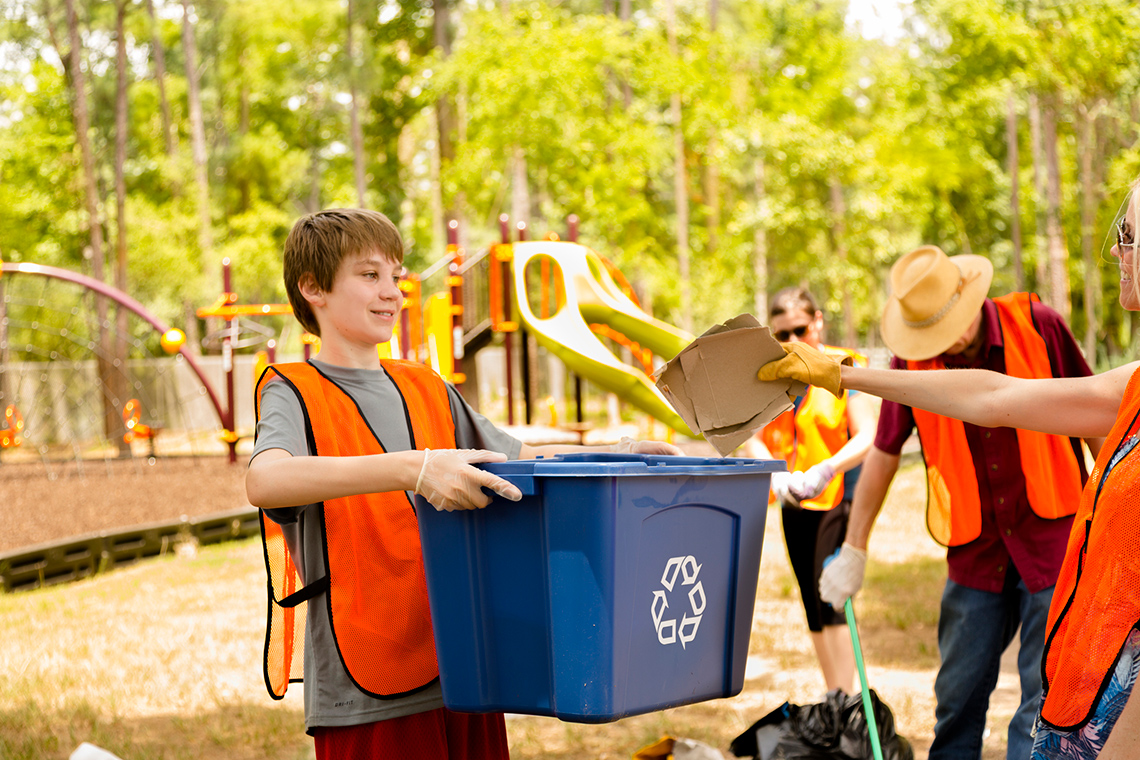Minds On
Oral text analysis
Oral texts often include specific language to make their messages more engaging, effective and impactful. Explore the following audio recording and determine what words and phrases are being used to make this message more engaging and impactful.
Record these words and phrases in an audio recording, the following chart, or using a method of your choice.
Access the following audio recording entitled “August Heat” to examine the message. Also, explore the next image that accompanies the audio recording.
August Heat

Complete the August Heat Analysis Chart in your notebook or using the following fillable and printable document to record your analysis of the audio recording.
| Words used in “August Heat” | Phrases used in “August Heat” |
|---|---|
Press the ‘Activity’ button to access August Heat Analysis Chart.
Action
Figurative language

Words are powerful! We can use our words to communicate many different messages. We can also use our words as powerful tools in the area of description, to make our points even more powerful.
We are used to analyzing figurative language in literature, but figurative language is also often used in oral texts and in spoken communications with others, both formal and informal. We can utilize figurative language in different ways to express ourselves more dramatically and emphatically.
Let’s review the following figurative language as we return to the audio recording titled “August Heat” in the Minds On section.
Press each tab to learn more about different figurative language.
A simile is a figure of speech that compares two things that are not alike. We notice the use of the words “like” or “as” and they are commonly used in everyday communication.
For example: “It’s as hot as the sun!”
A metaphor is a statement that compares two things that are not alike. Although the definitions are very similar to similes, metaphors do not use the words “like” or “as.”
For example: “All the world is a stage.”
Personification is giving human characteristics to non-living objects.
For example: “The sun peaks behind the fluffy clouds.”
Imagery is using very descriptive language to make our sentences and paragraphs easy for readers to use their imagination and make connections.
For example: “Step onto the velvety rocks in the cool, rushing water.”
Hyperbole is an exaggeration used to emphasize a point or bring out a sense of humor. Hyperbole is used often in everyday conversations.
For example: “August in Ontario often feels as hot as the sun!”
Let’s practice!
Practice with figurative language with the following matching activity.
For each statement, select the corresponding figurative language term.
Using figurative language to create an important message

Let’s try using some of these figurative tools to create an important message for a young audience.
In the Consolidation section, you will use figurative language in an important message for young students in your school community or neighbourhood community about the importance of recycling.
Consider creating a few phrases that involve recycling that you could use in your message. You can use the following chart, an audio recording or a method of your choice to record your ideas.
Complete the chart for The Importance of Recycling in your notebook or using the following fillable and printable document to record your ideas for your message.
| Figurative language term | Ideas of phrases involving the importance of recycling |
|---|---|
|
Simile |
|
|
Metaphor |
|
|
Personification |
|
|
Imagery |
|
|
Hyperbole |
Press the ‘Activity’ button to access The Importance of Recycling.
Consolidation
The importance of recycling!

It is now time to create your oral message for your school community or your neighbourhood community.
This message will help to ensure that everyone in your school community or neighbourhood community understands the importance of recycling. Consider the following questions:
- How will you include the figurative language tools you explored in the Action section to make your message more powerful?
- What will your oral message be? Maybe you are creating an announcement, a skit to perform at an assembly, community meeting, or a presentation for a particular audience.
Create a script for your message in an audio recording, on paper, in a visual representation like a storyboard or comic, digitally, or in an oral presentation.
Use the following checklist to ensure that you have included an example of each figurative language term:
Figurative Language Checklist
Creating messages of positive change
Let’s try using some of these figurative tools to create a message about positive change. Spend some time exploring and practice using more examples of each of these tools. You will use figurative language as you create a message about making a positive impact within your school. As you explore, if you discover an example that you could use in this message, record it and discuss this with peers, or your teacher, if possible, to strengthen your message.
Reflection
As you read the following descriptions, select the one that best describes your current understanding of the learning in this activity. Press the corresponding button once you have made your choice.
I feel…
Now, expand on your ideas by recording your thoughts using a voice recorder, speech-to-text, or writing tool.
When you review your notes on this learning activity later, reflect on whether you would select a different description based on your further review of the material in this learning activity.